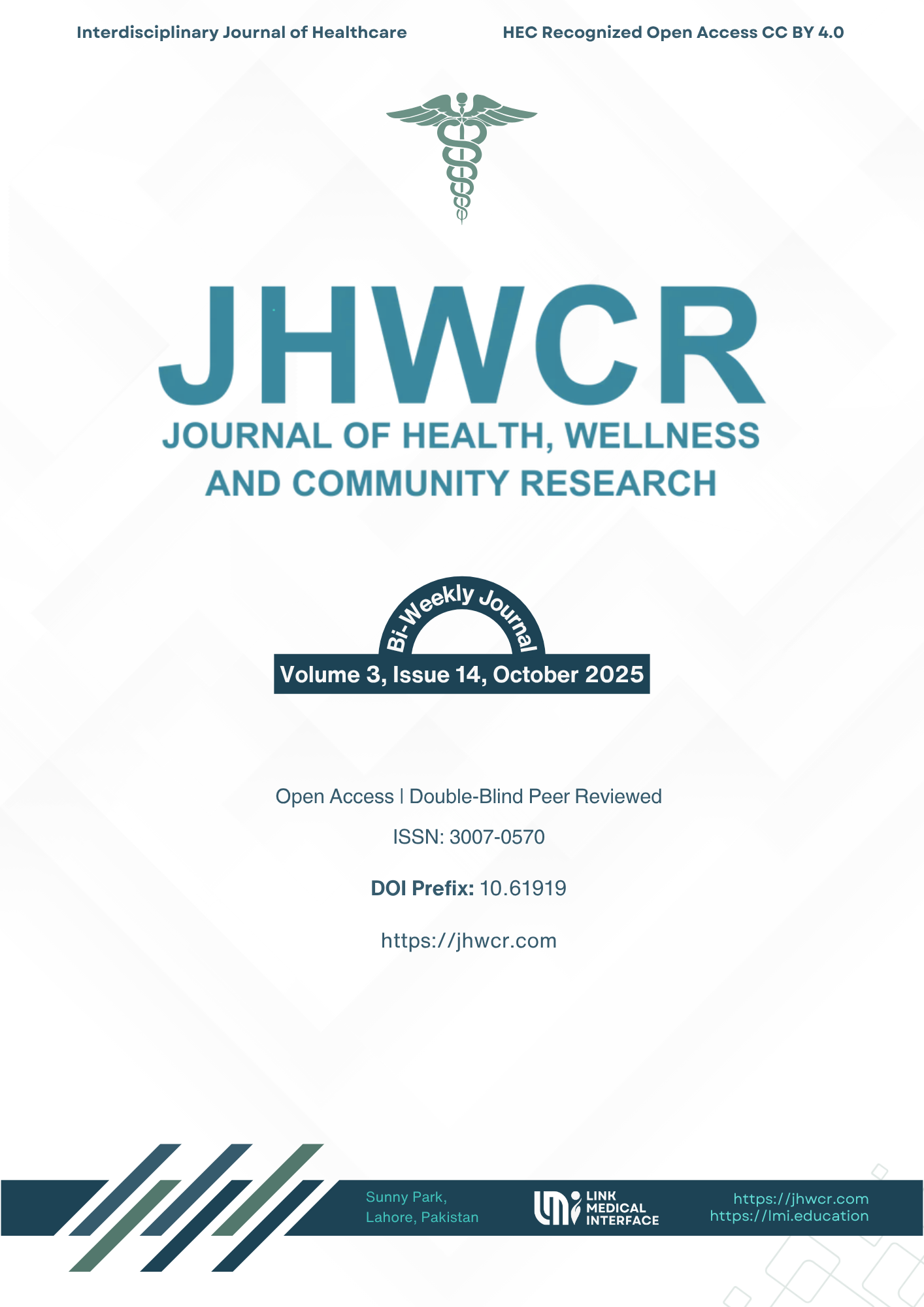The Radiological Association of Renal and Ureteric Calculi with Hydronephrosis and Hydroureter on CT Scan
DOI:
https://doi.org/10.61919/0rt7vc24Keywords:
Hydronephrosis, Hydroureter, Renal Calculi, Ureteric Calculi, CT Scan, Urinary Tract ObstructionAbstract
Background: Nephrolithiasis and ureterolithiasis are common causes of flank and abdominal pain and frequently lead to complications such as hydronephrosis and hydroureter, which can cause progressive renal impairment if untreated. Computed tomography (CT) has become the diagnostic gold standard for urolithiasis, providing precise visualization of stone location, size, and associated obstructive changes. Despite global recognition of CT’s diagnostic value, limited regional data exist correlating renal and ureteric calculi with secondary obstructive findings on CT in symptomatic South Asian populations. Objective: To evaluate the radiological correlation between renal and ureteric calculi and the presence and severity of hydronephrosis and hydroureter on CT among patients with suspected urinary tract obstruction. Methods: A cross-sectional observational study was conducted at Ghurki Trust Teaching Hospital, Lahore, including 75 adults aged 18–80 years presenting with flank pain or related symptoms. All participants underwent non-contrast CT KUB. Calculi were categorized by site and laterality, and hydronephrosis was graded from mild to severe. Associations between calculi and obstructive findings were assessed using Chi-square tests, with Cramer’s V and 95% confidence intervals reported; p<0.05 was considered significant. Results: Renal calculi were present in 74.7% and ureteric calculi in 66.7% of patients. Hydronephrosis was detected in 60% and hydroureter in 34.7%. Hydronephrosis showed a significant association with ureteric calculi (p=0.046), and bilateral renal calculi correlated with higher hydronephrosis grades (p=0.004). Hydroureter demonstrated a strong relationship with ureteric calculi (p<0.001) and bilateral ureteric stones (p=0.004). Conclusion: Ureteric calculi are the primary determinant of urinary tract obstruction, significantly contributing to hydronephrosis and hydroureter. CT provides comprehensive diagnostic evaluation of stone burden and obstruction severity, guiding early and precise intervention to prevent renal damage.
Downloads
Published
Issue
Section
License
Copyright (c) 2025 Wajiha Zafar, Anamta Fatima, Ifra Mukhtar, Alaiba Maqsood, Abdullah Nazakat, Abdullah Khalid, Ali Inam (Author)

This work is licensed under a Creative Commons Attribution 4.0 International License.


